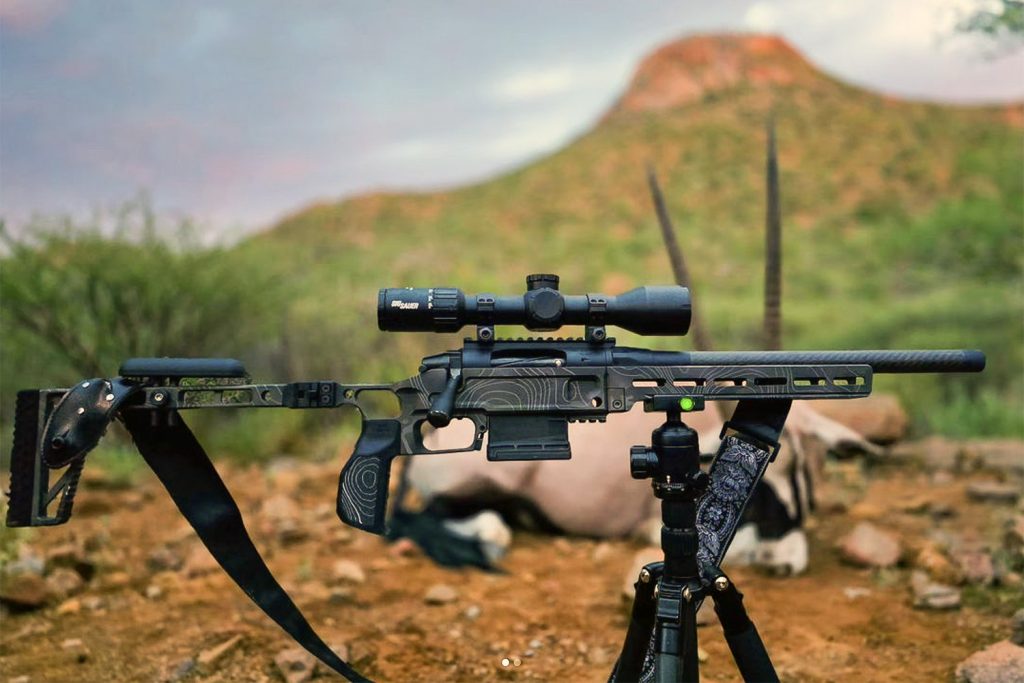
Hunters and competitive marksmen and women thinking about traveling overseas for their next adventure should keep in mind that the Biden administration’s new rule targeting firearm exports also puts their personally-owned firearms in the crosshairs.
The Commerce Department’s Bureau of Industry and Security (BIS) published an Interim Final Rule that makes permanent a freeze on firearm and ammunition exports. NSSF is deeply critical of the rule and is working with Washington, D.C., lawmakers to push back against the Biden administration’s attack on the firearm and ammunition industry.
That rule will change the license policy for a group of 36 countries considered to be “high risk” and BIS will revoke any current licenses held by exporters. There are a bevy of new restrictions, including a requirement that licenses that were once valid for four years are now only good for one year. Every company applying for a license is being told that all licenses will be considered only on a “case-by-case” basis under a new human rights-centric review policy and to expect a “presumption of denial” for commercial sales in those “high risk” countries even if they’ve legally been exporting to an overseas firearm dealer for decades.
Hidden in some of the fine print, though, are new restrictions for hunters traveling overseas. That lifetime dream of hunting in the African plains, Scottish Highlands or New Zealand mountains is going to come with more challenges than just arranging travel, passports, guides and getting on the animals. Now, there’s a new maze of legal paperwork too.
Pack Your Patience
Starting May 30, if a hunter is packing a gun to travel overseas, they’re going to need to pack along patience and limit their firearms to just three total and no more than 1,000 rounds of ammunition.
Until now, hunters traveling overseas were allowed to carry their personal firearms as follows: three shotguns with barrel length 18 inches or more and shotgun shells with no quantity limit, and three firearms (rifles and handguns) and related ammunition up to 1,000 rounds, without a requirement for an export license. That is Export Administration Regulations (EAR), License Exception 740.14 Baggage (BAG), which allowed sportsmen and women to travel with their personal firearms as long as those firearms and ammunition were personal baggage, intended for personal use, would not be sold or transferred to a foreign person and that were returned to the United States – the point of origin. Now, it’s a little trickier.

Hunters traveling overseas will now be limited to just three firearms total and 1,000 rounds for temporary export for personal use. There is an allowance for related parts, components, accessories and attachments. The new Interim Final Rule adds new Export Classification Control Numbers (ECCNs) specific to semiautomatic firearms so BIS can track them. The new ECCNs are: 0A506 for semi-automatic rifles, 0A507 for semi-automatic pistols and 0A508 for semi-automatic shotguns. The revised language in the BAG exception references these ECCN numbers, and states “Not more than three firearms may be taken on any one trip (this includes shotguns in ECCNs 0A502 or 0A508, as well as firearms in ECCNs 0A501, 0A506, or 0A507).”
Final Destination Matters
There’s more fine print, though. Hunters planning destinations which are in Country Group D:5 (with the exception of Zimbabwe) will require an export license to travel with personal firearms. Those D:5 countries are Afghanistan, Belarus, Burma, Cambodia, Central African Republic, China, Democratic Republic of Congo, Cuba, Cyprus, Eritrea, Haiti, Iran, Iraq, North Korea, Lebanon, Libya, Nicaragua, Russa, Somalia, South Sudan, Sudan, Syria, Venezuela and Zimbabwe (Again – Zimbabwe is excluded from this export license requirement under the Interim Final Rile).
Likewise, Caribbean countries will also require an export license for personal firearms. That includes Antigua and Barbuda, Bahamas, Barbados, Belize, Dominica, Grenada, Guyana, Haiti, Jamaica, Montserrat, St. Lucia, Suriname, St. Kitts and Nevis, St. Vincent and the Grenadines, and Trinidad and Tobago; associate members: Anguilla, Bermuda, British Virgin Islands, Cayman Islands, and Turks and Caicos, as well as any other state or associate member that has acceded to membership in accordance with Article 3 or Article 231 of the Treaty of Chaguaramas for members.
BIS & NSSF Want Individuals to Comment
BIS is seeking comment on the Interim Final Rule – especially for two issues that are important to hunters and sportsmen traveling overseas with firearms. BIS wants comments to know whether there should be imposed time limits on the use of the exceptions that allow for firearms to be temporarily taken overseas. BIS is considering 45, 60, 90 or 180-day limits on how long a personal exporter of firearms is eligible to keep a firearm overseas.
Individuals are strongly urged to make comments in response to the above. Comments may be submitted electronically to www.regulations.gov. The regulations.gov ID for this rule is: BIS-2024-0003, and refer to RIN 0694-AJ46 in all comments.
There’s more. BIS also wants to hear about revisions to license exceptions that would require individuals to submit electronic export information (EEI) in the Automated Export System (AES). This requirement was quietly placed in the International Traffic in Arms Regulations (ITAR) in 2012 but was not enforced by Customs and Border Protection (CBP) until 2015. Implementation in 2015 created many problems because of the need for individuals to: obtain from IRS an Employer ID number and list themselves as a business even when they were not; and having to gain entry to the AES system and accurately enter the required data elements in a commercial system meant for exports by companies. Individuals cannot obtain an Employer ID number from the IRS without falsely stating they are a business. And submitting false information to the federal government is a crime. AES is intended for businesses exporting goods, not consumers who will not be able to pass the certification test.
Several gun organizations, including NSSF, pushed back against this regulation. As a result, when BIS published the final rule in 2020 transferring firearm controls to Commerce Department, the BAG license exception did not require individuals to file export information in the AES system. The current regulation, since 2020 for license exception BAG, requires individuals to complete the CBP form 4457 and submit it to CBP officials when the firearms are inspected prior to export. This system has been working well for several years and it is not clear why BIS is considering a change which would make the process much more difficult for individuals.
BIS is asking for comments on the impact of this change on individuals, and they welcome comments “that provide alternative suggestions for increasing transparency and reducing diversion risk without imposing a mandatory EEI filing requirement in AES for exports authorized under License Exception BAG.”
Individuals are strongly urged to make comments in response to the above. Comments may be submitted electronically to www.regulations.gov. The regulations.gov ID for this rule is: BIS-2024-0003 and refer to RIN 0694-AJ46 in all comments.
NSSF will be arguing against these changes in the comments letter to be submitted and would be happy to include information from individuals or other organizations to strengthen those arguments against this unnecessary and burdensome potential regulatory change.
